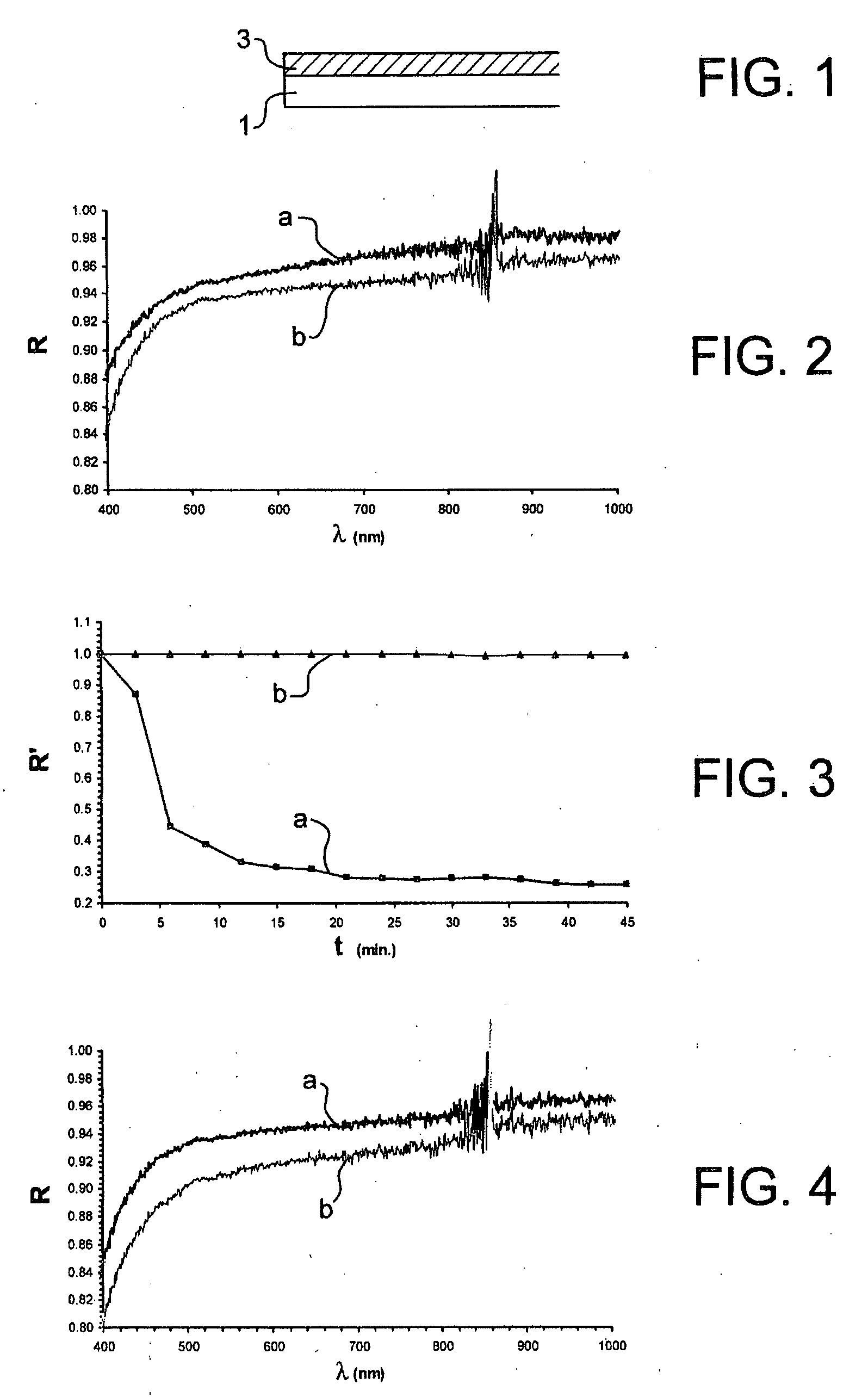Process for Preparing a Sol-Gel Solution and Use of this Solution to Form a Coating to Protect a Substrate Having a Metal Surface
a technology of sol-gel solution and coating, which is applied in the direction of solar heat devices, magnetic recording, lighting and heating apparatus, etc., to achieve the effect of improving the stability of sol-gel solution and maintaining the same protective properties
- Summary
- Abstract
- Description
- Claims
- Application Information
AI Technical Summary
Benefits of technology
Problems solved by technology
Method used
Image
Examples
Embodiment Construction
[0154]This example illustrates the preparation of a coating material intended for a silvered surface of a reflector.
[0155]The preparation of such a material comprises:[0156]the preparation of the material precursor sol-gel solution and preparation of the silvering surface; and[0157]the deposition of said solution followed by a crosslinking / densifying treatment.
a) Preparation of the Material Precursor Sol-Gel Solution
[0158]Placed in a three-necked flask were tetraethylorthosilicate Si(OCH2CH3)4 in absolute ethanol, the amount of tetraethylorthosilicate being 51.3% by weight relative to the total weight of the resulting solution. This solution was stirred until the tetraethylorthosilicate had dissolved. Next, 3-mercaptopropyltrimethoxysilane HS—(CH2)3—Si(OCH3)3 was added to the solution, the amount of 3-mercaptopropyltrimethoxysilane being 5% by weight relative to the weight of tetraethylorthosilicate. The resulting solution was stirred for 30 minutes. When the 3-mercaptopropyltrimeth...
PUM
| Property | Measurement | Unit |
|---|---|---|
| Temperature | aaaaa | aaaaa |
| Temperature | aaaaa | aaaaa |
| Percent by mass | aaaaa | aaaaa |
Abstract
Description
Claims
Application Information
 Login to View More
Login to View More - R&D
- Intellectual Property
- Life Sciences
- Materials
- Tech Scout
- Unparalleled Data Quality
- Higher Quality Content
- 60% Fewer Hallucinations
Browse by: Latest US Patents, China's latest patents, Technical Efficacy Thesaurus, Application Domain, Technology Topic, Popular Technical Reports.
© 2025 PatSnap. All rights reserved.Legal|Privacy policy|Modern Slavery Act Transparency Statement|Sitemap|About US| Contact US: help@patsnap.com


